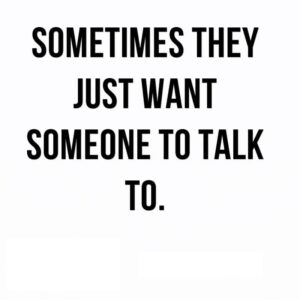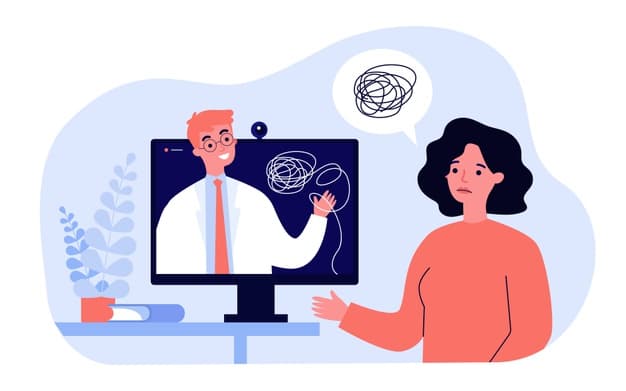Mental health issues are on the rise. A new report by the World Health Organization says that depression is now one of the most common diseases. It is not just adults that are affected by mental disorders. Teens have also been found to suffer from them at alarmingly high rates. There are many people with mental health problems. Some of them cannot afford or don’t want to see a therapist face-to-face. These people can use telehealth therapy which is an alternative treatment option. In this blog post, we will explore how telehealth therapy works. And why it may become one of the future standards for delivering mental health care services.
Contents
What Is Telehealth Therapy?
Telehealth therapy is a form of mental health treatment that involves sessions with a therapist over the phone or the internet. This type of therapy can be helpful for people living in rural areas or who have trouble getting to appointments. It can save them money on travel costs. Telehealth therapy can also be used as a way to connect with a therapist remotely if you are living abroad or traveling. This uses technology and the internet as a means of treating clients, either in lieu of or in conjunction with face-to-face meetings between therapist and client.
Types Of Telehealth Therapy
There are several types of telehealth therapy:
- Telephone counseling or therapy, which is a conversation between the therapist and client that takes place over the phone.
- Video counseling or therapy, which is a live video session between the therapist and client.
- Text chat counseling or therapy, which is a text conversation between the therapist and client.
- Email counseling or therapy, which is an exchange of emails between the therapist and client.
Telephone counseling or therapy In Telehealth
Telephone counseling or therapy is a form of mental health treatment that uses the telephone to deliver services. It can be used to provide therapy, counseling, or consultation. With telephone counseling or therapy, the therapist and client communicate with each other by phone. The therapist may ask the client to do something to help them work on their goals. They can do this at home instead of coming back for another appointment.
Benefits
There are many benefits to using telephone counseling or therapy. Some of the benefits include:
- You can get help from a therapist without having to leave home.
- It is a cost-effective way to receive mental health services.
- You can talk to a therapist about difficult or embarrassing issues without having to see them in person.
- Therapists and clients can complete exercises and tasks at their own pace.
- The therapist and client can work together on therapeutic goals much faster than they could if seeing each other in person.
Disadvantages
There are no major risks associated with telephone counseling or therapy. However, there may be some disadvantages such as:
- Therapists may miss important body language cues that can reveal certain things about the client’s thoughts or feelings.
- It might not feel like the relationship is as authentic when communicating by phone.
- Some people might feel uncomfortable talking about personal issues over the phone.
- The therapist and client may not be able to resolve certain therapeutic goals or conflicts in a telephone session.
Overall, telephone counseling or therapy is a safe, effective, and affordable way to receive mental health services.
Video counseling or therapy In Telehealth
Video counseling or therapy in telehealth is a way to have therapy sessions with a mental health professional over the internet. You can use video counseling or therapy in telehealth to connect with a therapist who can help you with a range of issues, such as anxiety, depression, relationship problems, and more.
One of the great things about video counseling or therapy in telehealth is that it’s convenient. You can have sessions from the comfort of your own home, and you can connect with a therapist who fits your needs.
Tips to get started
- Talk to your doctor: If you’re thinking about trying video counseling or therapy in telehealth, it’s important to talk to your doctor first. Your doctor can help you make sure video counseling or therapy is the right choice for you. And your doctor can give you advice on how to get started.
- Find a therapist: Once you decide that telehealth might be right for you, it’s time to find a therapist. Talk to your doctor first. Ask your doctor or insurance company. They might have a list of therapists who provide video counseling or therapy in telehealth. You can search the internet to find sites that connect mental health professionals with people who want to do therapy on the internet.
- Be prepared for travel costs: In some cases, using video counseling or therapy in telehealth could mean paying more than you would pay for an office visit with a therapist because of travel costs—even if you’re seeing the therapist in your own home. If you’re interested in using video counseling or therapy in telehealth, be sure to ask about travel costs before you begin sessions.
- Connect with your therapist: Once you’ve found a therapist and scheduled your first session, it’s time to start connecting with them. Most therapists offer a free call to chat about what you want to work on and answer any questions. This is a good opportunity for you and your therapist to find out if video counseling or therapy in telehealth would be the best choice for you.
Benefits
- One of the biggest benefits is convenience. You can have therapy sessions from home. This is great because you can go when you are not busy or if your therapist’s office is far away.
- Another benefit of video counseling or therapy is that it can be cost-effective. Some insurance companies will pay for video therapy. Some therapists only charge less for internet sessions.
- Counseling is a good way to help you work on your problems. For example, some people have anxiety or stress. You can find a therapist who helps with those problems.
Drawbacks
There are a few drawbacks to video counseling or therapy in telehealth.
- One is that some people feel like they cannot be themselves when they are online.
- They might not feel comfortable sharing personal information with the therapist.
- Another drawback is that sometimes people have trouble connecting with the therapist on the computer.
- The therapist’s voice and image might not be very clear, which can make it hard to talk about problems.
Overall, video counseling or therapy in telehealth is a good way for people to get help for their mental health problems. It is convenient, cost-effective, and therapists are available for most problems. If you are thinking about trying it, be sure to talk to your doctor first.
Text chat counseling or therapy In Teletherapy
Text chat counseling is a type of counseling where you use text chat as the main way to talk to your counselor or therapist. It is a newer form of counseling or therapy that has been growing in popularity in recent years.
Many people are uncomfortable talking on the phone. Others live far away from counselors or therapists. Text chat counseling can help with this problem. It can also be helpful for people who are shy or feel uncomfortable talking about their problems with someone they do not know very well.
In-text chat counseling or therapy, the counselor or therapist and the client communicate by entering text into an online chat program. Such as Yahoo Messenger or Skype. People who have problems can use in-text chat counseling or therapy. This is just as helpful as face-to-face counseling. They also claim that it is sometimes easier and less stressful to communicate by typing than by talking. Some therapists use a webcam so they can see the person they are talking to.
Benefits
There are many benefits to text chat counseling or therapy.
- Some people find that it is easier for them to talk about their problems when they can take their time to type out their thoughts.
- This also allows the therapist to give more individualized attention to each client.
- In-text chat counseling and therapy are becoming more and more popular because it is convenient and affordable way to get help with your problems.
Drawbacks
There are a few drawbacks to in-text chat counseling or therapy.
- First, some people find that it is hard to focus on the conversation when they are also trying to read and type.
- Second, because this form of counseling is newer, there is not as much research on its effectiveness as there is for other forms of counseling and therapy.
- Finally, not all counselors or therapists offer in-text chat counseling or therapy. You may have to do a little searching to find someone who does.
Email counseling or therapy In Teletherapy
Email counseling or therapy in teletherapy is a form of therapy where the client and therapist communicate primarily through email. People who live in remote areas and people with busy schedules can use this type of therapy. People who have difficulty getting to appointments can also use this type of therapy. Email therapy might be a good choice for people who are shy or uncomfortable talking.
In email counseling or therapy, the therapist will send the client emails with questions or tasks to complete. The therapist will ask you to send messages about how you are feeling and what is happening in your life. The therapist will then reply to the client’s emails with feedback and advice.
Benefits
Email counseling or therapy in teletherapy is different from other forms of therapy. There are a few benefits that you can choose from:
- You can control the time spent on emailing the therapist and talking about issues
- It’s fast, there is no traveling time, so sessions take less time
- It’s flexible, if you have a busy schedule, it might be easier to communicate through email more often as your schedule allows as opposed to meeting every week at the same time
- Asynchronous communication means messages can be sent anytime during the day rather than having specific times for each session
- The therapist has access to your messages without needing to monitor you in person
Drawbacks
Just like any other form of therapy, email counseling or therapy has a few drawbacks:
- The therapist might not be able to answer your questions right away
- The therapist might not be available if you need emergency help
- You won’t get the personal touch that you would in a traditional therapy session
- It is necessary to have a computer and internet access
- You need to feel comfortable sending messages about personal issues
How To Tell If Teletherapy Is Right For You?
If you’re wondering if teletherapy is right for you, ask yourself the following questions:
- Do I have a computer and internet access?
- Can I commit to communicating with my therapist through email on a regular basis?
- Are there times when I would need emergency help from my therapist?
- Am I comfortable sending messages about personal issues to my therapist?
If you answer yes to most of these questions, then teletherapy might be right for you. If you answer no to any of these questions, then traditional therapy in-person might be better suited for your needs.
Benefits Of Teletherapy
There are a lot of benefits to teletherapy.
- First, it is good for people who live in remote areas and have busy schedules.
- It’s also perfect for those who want more control over the time spent talking about personal issues.
- Additionally, if you feel uncomfortable meeting your therapist face-to-face, then email counseling or therapy might be right for you.
- Lastly, it’s a great way to connect with your therapist without having to worry about interruptions.
What Is The Future Of Mental Health?
The future of mental health will include more people using online treatments such as telehealth therapy for better results and increased flexibility.
- Emails are a good way to talk to therapists instead of going into an office every week.
- Emails save time and money because you don’t have to go into their office.
- Not only does email counseling save time but it also gives you more control over the sessions, which can make therapy feel less overwhelming.
- With online treatments becoming easier to access and more popular among people with busy schedules, telehealth therapy might become the future of mental health.
Is Teletherapy Affordable?
- Unfortunately, teletherapy isn’t always affordable.
- Insurance companies might not cover this type of therapy yet since it is still new in the mental health field.
- However, there are some online therapists who have lower rates if you can pay by PayPal or credit card instead of using your insurance benefits.
Drawbacks Of Teletherapy
Telehealth therapy does come with a few drawbacks that you should consider before choosing to do email counseling for yourself or someone else:
- Not all therapists offer email treatment options and insurance covers very little when applying to online therapies.
- The therapist might not be available at times and cannot provide emergency help like they would if meeting face–face while having an anxiety attack.
- The lack of personal touch can be a turnoff for some people who are looking for traditional therapy
- You need to have internet access and feel comfortable sending messages about personal issues.
Conclusion
Telehealth therapy is a cost-effective way to get mental health treatment. The future of healthcare may be in telemedicine. If you are looking for an affordable and convenient option, look into how we can help. We offer all levels of care so whether it’s neuropsychological testing or depression counseling, we have the right solution for you. You don’t need to wait any longer. Call now if our service is the best fit for your needs.
A Word From Mantra Care
Your mental health — your psychological, emotional, and social well-being — has an impact on every aspect of your life. Positive mental health essentially allows you to effectively deal with life’s everyday challenges.
At Mantra Care, we have a team of therapists who provide affordable online therapy to assist you with issues such as depression, anxiety, stress, relationship, OCD, LGBTQ, and PTSD. You can take our mental health test. You can also book a free therapy or download our free Android or iOS app.










